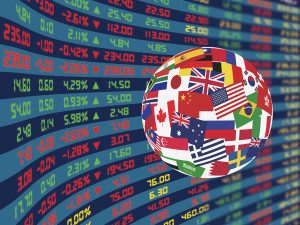
This too shall pass
It seems anytime I left my desk last week the market was sure to fall apart but after witnessing 25 years + of market corrections, I know storms don’t last forever, and as far as the recent bout of market mayhem is concerned, this too shall pass.
Traders quickly conjectured that the ‘crash’ was mainly due to over-crowded positioning in short equity volatility trades and, therefore, was a relatively isolated event. But this does not mean equity markets are out of the weeds just yet.
With US cash flow models factoring in higher US bond yields, equity markets repricing was always on the cards, but unequivocally the rapidity of the move higher in yields was stifling and stop losses were combatively triggered. And when factored with the unbridled use of leverage in equity positions it likely caused everyone to head for the exits due to cash and margin requirements. The great unknown in the debate is just how much equity froth is based on leverage and to what extent will higher US bond yields squeeze these positions either from a cash position or through asset rotation perspectives.
It was a crazy week for US rate markets, but with powerful US economic signals and interest rates most certainly to rise quicker than expected, last week tumult could be little more than the start of the equity rollercoaster. If cumulative boost from tax reform and fiscal stimulus nudges GDP outline 1.5% higher over the next six to 9 months how does the Fed possibly stick to their three dot plot projections for 2018?
Bond markets are only in the early stages of buying into the global reflation theme, and increasing inflation expectations are driving nominal yields higher. Last week there was a significant topside move in US yields which suggest we could easily tack on another 30-35 basis points 2’s through 10’s given the US fiscal stimulus backdrop. But even without inflation, global central banks will move rates higher, and this will add to higher yield environment, higher inflation or not.
The Feds seem undeterred from the path of gradual normalisation by the recent market turmoil, and we should not expect a Powell ” Put.” given the economic indicators remain strong. And with FED Dudley chiming in, the recent Stock market volatility is ” no big potatoes.” , just imagine a big potato !!
Oil Markets
U.S. crude oil fell below $59 a barrel for the first time in 2018.Rising US production and a resurgent dollar have stacked pressure on oil prices amid a broad financial market sell-off. And on Friday WTI nosedived after the U.S. rig count rose by 26 rigs in the week through Feb. 9 to a total of 791, supporting the EIA revised production forecast that the US would reach the lofty 11 million bpd by the end of 2018
Also, the possible demise of the OPEC agreement has traders on pins and needles after The head of Russian energy giant Gazprom Neft on Friday said producers could adjust their commitments under the deal as soon as next quarter.
Gold Markets
Without question last week was a stressful week in the Gold markets which saw a little appeal for traditional haven assets as Wall streets sinkhole expanded.
At the moment higher US yields continue to weigh negatively on gold’s appeal over the short term, but the recent market tumult likely has overleveraged equity positions scrambling for margin top-ups, and to a degree, there was cause for some cross-asset unwinds including gold allocations which were probably used to fund margins.
In the more extended run with inflation expectations increasing on the back of US stimulus, this should be a consideration for growing one’s gold portfolio.
At the retail levels, Mainland Gold consumption is rising in preparation for Chinese Lunar New Year holidays, not to mention a last-minute splurge for Valentine’s day should keep retailers busy.
Currency Markets
Currency markets were more or less a mixed bag last week, a potpourri of events but not one convincing driver. And with little to glean from Friday close, currency traders could remain sidelined watching equities markets swings in wonderment at least until this week’s US CPI. Given all this rukus started with an uptick in the wage growth component from this months NFP release; this weeks US inflation data will be a monster of a print.
Japanese Yen
Funding positions continue to unwind which at least in the case of JPY, is having a more significant influence over USDJPY than higher US yields. The reappointment of Kuroda could retrace some speculations on the policy adjustments; the Yen will remain the puppet whose strings are manipulated by equities and fixed income price movements.
Australian Dollar
RBA and SOMP behind us and signalling nor rush to hike for a considerable period given the slight dovish lean in the inflation outlook. The AUD should, therefore, be back trading off risk sentiment, commodity prices and ultimately the underlying USD movements. While the Aussie bounced higher above 78 on positive US equity close on Friday, we should expect commodity currencies trade poor amid the recent volatile market. Rallies will likely remain subdued near-term, so the Aussie should remain vulnerable.
Long Euro short Aussie trade set up should return in vogue over the short term given divergent central bank policy expectations.
Malaysian Ringgit
The market continues to grapple with growth versus the inflation narrative, and as this volatility irons itself out, Asian markets tend to exhibit a higher sensitivity to global fluctuations.
And while the Ringgit is better positioned than regional peers to withstand the recent uptick in Global volatility due to strong Marco foundations and the BNM on the path to interest rate normalisation, The domestic economic landscape will come under intense glare when Q4 GDP is released on Wednesday.
While March a rate hike expectations are low due to the dovish inflation overtones expressed by BNM in January, but a notable above consensus print on this weeks GDP will increase the odds of a rate hike later in 2018 and strengthen the Ringgit. ( Consensus is 5.8 )
While oil prices continue to move lower due to US supply concerns, I believe this is more technical driven as dollar index is holding above 90 cents, putting pressure on all commodities. Once this period of excess volatility decreases, the global growth narrative should reassert and commodity prices should rise.

